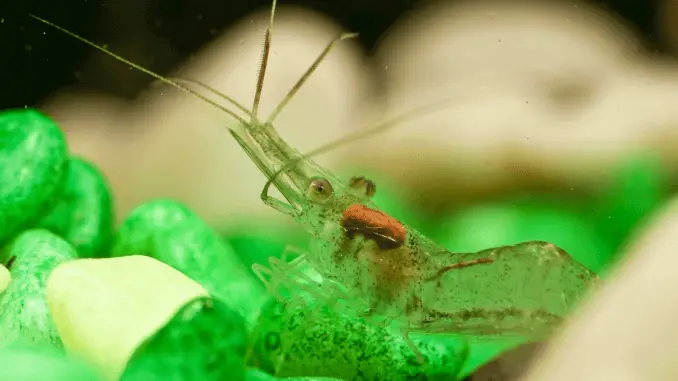
Ghost shrimp are a great addition to your aquarium. They make interesting shrimp-only aquariums, or they can be mixed in a community tank to add another point of interest.
Many people think it is difficult to meet the dietary requirements of something other than fish, but they are really not that much different in terms of what diet they require.
In this article, we’re going to take a look at what these shrimp eat in the wild, and the best way to replicate that in the aquarium.
What Do Ghost Shrimp Eat in the Wild?
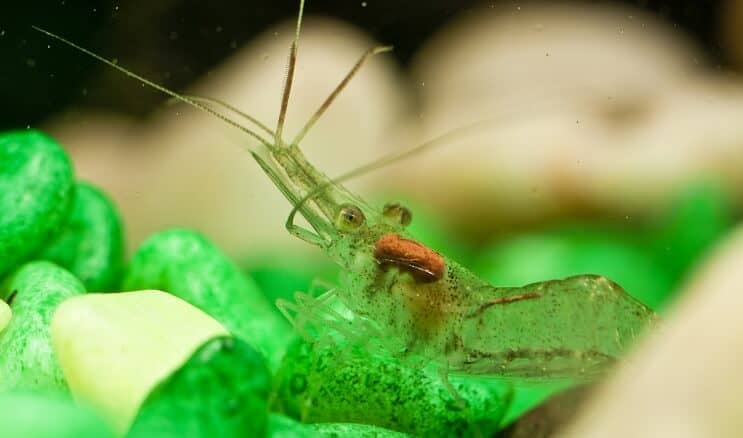
Their natural habitat would be freshwater rivers and lakes in North America. There are lots of features that make this an ideal habitat for the ghost shrimp. They interact with the environment to make it more hospitable for other species too.
Firstly there are the slow-moving currents, though the shrimp are less affected by these since they spend most of their time in the lower levels of the water.
The sandy substrate is important because any food that sinks from above sits on the surface to be later scavenged by a passing shrimp. You will also find rocks, logs, and plants. These offer protection from predators and a home to safely rest in.
Plants are used for food in the wild. This would usually be in the form of detritus (dead plant pieces).
If they were struggling to find food, the ghost shrimp might start nibbling at live plants. This wouldn’t cause much damage unless there was a large group of shrimps at work.
The main bulk of their diet would be algae. This grows on hard surfaces and is collected as the shrimp move on by.
The rest of their diet can be quite varied since they’ll eat whatever they come across that’s small enough to fit into their mouths. This is the advantage of being an omnivore. The most common examples are dead organic matter, eggs/larvae and small insects.
What Can Ghost Shrimp Eat in an Aquarium?
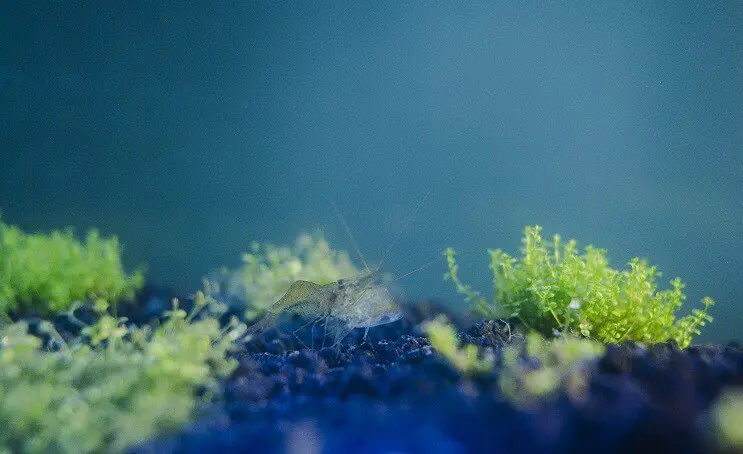
Your shrimp needs to be comfortable in its environment in order to feed properly. That’s why it’s important to set up your tank as closely to their natural habitat as possible to prevent a hunger strike.
The substrate is one of the most crucial things to replicate because it’s where the shrimp spend most of their time.
Ensure the substrate is finely-grained. Ghost shrimp have long, sensitive antenna that could get damaged if they regularly rub against rough surfaces.
Once the tank is set up you can move on to planning their diet. By thinking about their nutritional requirements, you can work out which foods are best for keeping your shrimp healthy.
Varying their diet will give them a range of nutrients.
Shrimp are naturally high in oils and fats, so can easily tolerate fatty foods. Most store-bought foods will contain fats to some degree, like live/frozen options. Some store-bought foods are fattier than others so check the label.
Proteins are particularly important when they’re growing and then become less of a focus when they reach adulthood (though they shouldn’t be removed from the diet completely). Algae is a good source of protein, as well as live/frozen foods.
You can buy calcium supplements that help shrimp form a strong shell. They need this to protect themselves from other fish and harsh conditions in their environment.
Food To Feed Your Ghost Shrimp:
- Algae
- Algae Wafers
- Aquarium Plants
- Baby Shrimp Food
- Brine Shrimp
- Daphnia
- Fish Pellet Foods
- Flake Foods
- Frozen Foods
- Fruit
- Green Vegetables
- Homemade Fish Foods
- Insects
- Mosquito Larvae
- Shrimp Pellet Foods
- Small Live Foods
- Squid
What Do Baby Ghost Shrimp Eat?
If you’re planning on breeding shrimp, or if it happens by accident, you need to consider that the larvae are going to feed differently to the adults.
The larvae hatch from eggs so they start off very small. This means they can only eat foods smaller than their tiny mouths.
Baby ghost shrimp will be able to eat algae and small bits of plant debris without any help from you, it’s the food you add to the tank that will need some adjusting. Generally, this just means breaking foods down to a size that can fit in their mouths, such as crumbling down large flakes of food into little fragments.
A few foods will be hard for them to eat. Live foods are particularly difficult because they can escape. You should save these for when they’re older.
You can buy baby shrimp food which is specifically designed to bridge the gap between hatching and maturity. It comes as a powder which you can sprinkle into the tank when needed.
It shouldn’t be hard to cater for their small size, and once they have grown legs they should be able to eat the same foods as the adults. After five weeks they will be fully mature.
What Do Adult Ghost Shrimp Eat?
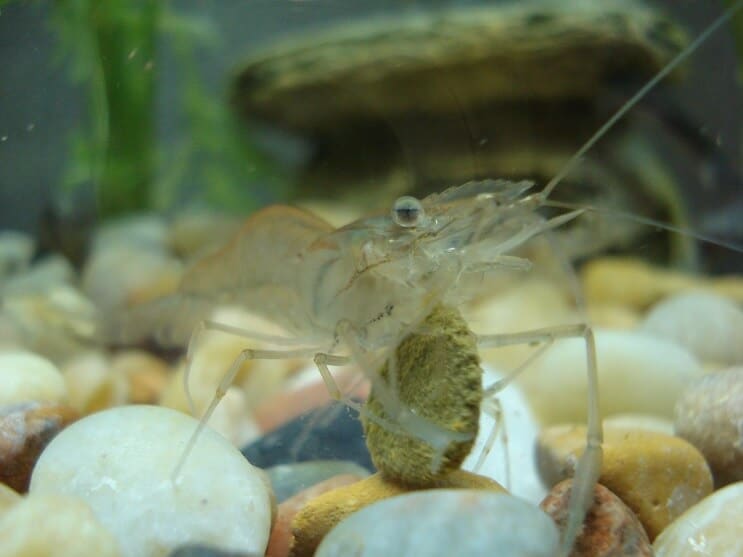
Adult ghost shrimp spend nearly all their time feeding; they’re very well practiced at it.
They should be able to find algae in your tank easily. Most people worry that they have too much algae rather than too little, which is why the shrimp might have been bought in the first place.
It’s not hard to find foods to add to the tank as they’ll eat pretty much anything. Some of the easiest are store-bought flake and pellet foods.
Pellet foods quickly sink to the bottom of the tank, so they’re more likely to float past fish that might not have reacted fast enough.
Flake foods stay on the surface for longer, sometimes shrimp swim upside down at the surface of the water to feed on them.
If you don’t think that there’s enough algae growing in the tank, then most stores sell algae wafers that provide the same nutrients.
Live foods are difficult for shrimp to catch as they’re not the most effective predators. Make sure any live foods that you do add are small, like brine shrimp. If you have fish in the tank too then live foods will eventually be eaten anyway.
Frozen food equivalents are good options as their high quality and full of nutrients. These could be brine shrimp, mosquito larvae, or even bloodworms.
It’s best to mix up their diet to make sure they get a range of nutrients and keep things interesting. You might not be able to get some of the foods already mentioned for one reason or another, but there are still things you can use around the house.
Your shrimp will appreciate raw green vegetables. These supply fiber which helps food flow through the body smoothly.
Avoid adding anything to the tank that contains copper since all shrimp are particularly sensitive to it and may die as a result. Other metals should be kept low too, as most are toxic in large concentrations.
When and How Often Do Ghost Shrimp Eat?
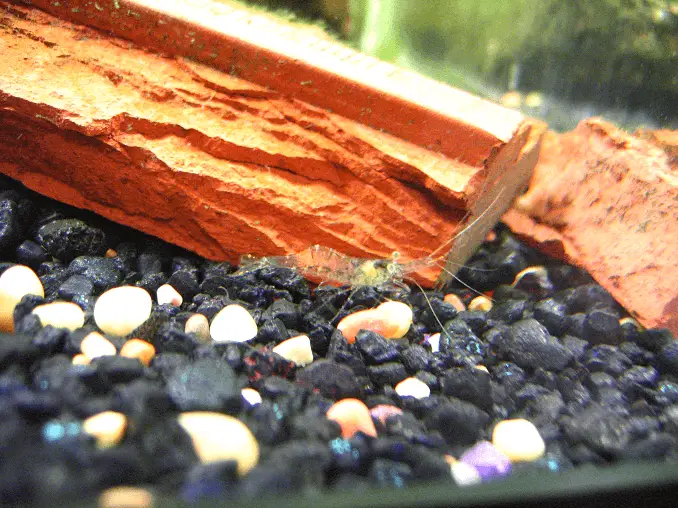
We’ve established that there are lots of foods that your ghost shrimp can eat, but they can’t be fed all of it at once. They only need small amounts of food to keep them going.
If you’re keeping shrimp in an aquarium with fish, then they’ll eat the leftovers of the fish food. If you’re keeping a tank of just shrimp, then they’ll need their own food added to the tank.
It all depends on how much algae are growing in the tank; more algae mean that you can feed them less.
An average tank with a group of four ghost shrimp will need feeding 1 algae wafer every other day.
You can substitute out the algae wafers for other foods of your choosing, giving them access to other nutrients. As scavengers, they don’t need a strict feeding routine. They’ll wander around the tank until they come across the food. They’re always feeding on algae so for them, it’s always feeding time.
Summary
Your ghost shrimp will eat almost anything you give them so they’re very easy to look after.
If you’re adding them to a tank that already has some fish in then it’s even easier; they barely need feeding.
One of the main things to look out for is whether the shrimp will be physically able to eat the foods you give them. Some foods are just too big for their tiny mouths, especially when they’re juveniles.
Then it’s just a matter of giving them all the nutrients they need to stay healthy. Most store-bought foods consider this themselves, but you can help by adding supplements of calcium for their shells.
They’re easy to look after and if kept healthy, you have a unique new tank mate that does some of the cleaning to save you time.
What do you feed your ghost shrimp? Let us know in the comments below…

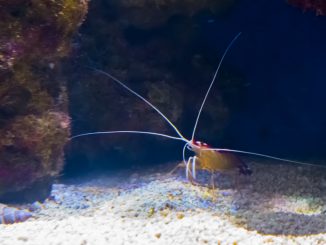
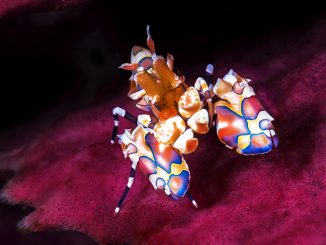
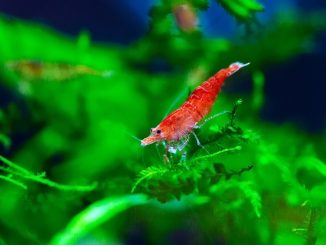
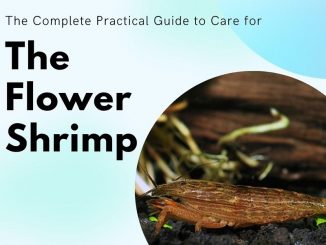
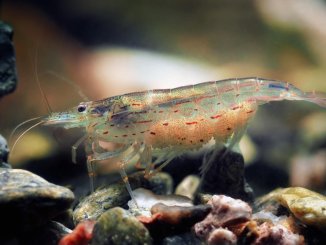
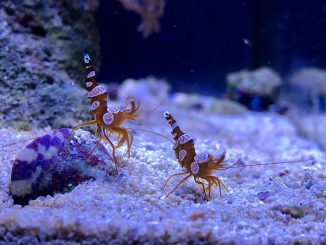
Good day.. I would like to ask a favor of identifying a certain shrimp I added to my community tank. It looks much like a ghost shrimp, but bigger.. I feed them pellets, but they seem to have a diet for my fishes, as well. They ate already some of my fishes..
I will be moving my fish to a larger tank. Wondering how to catch my Ghost Shrimp? They hide so well…